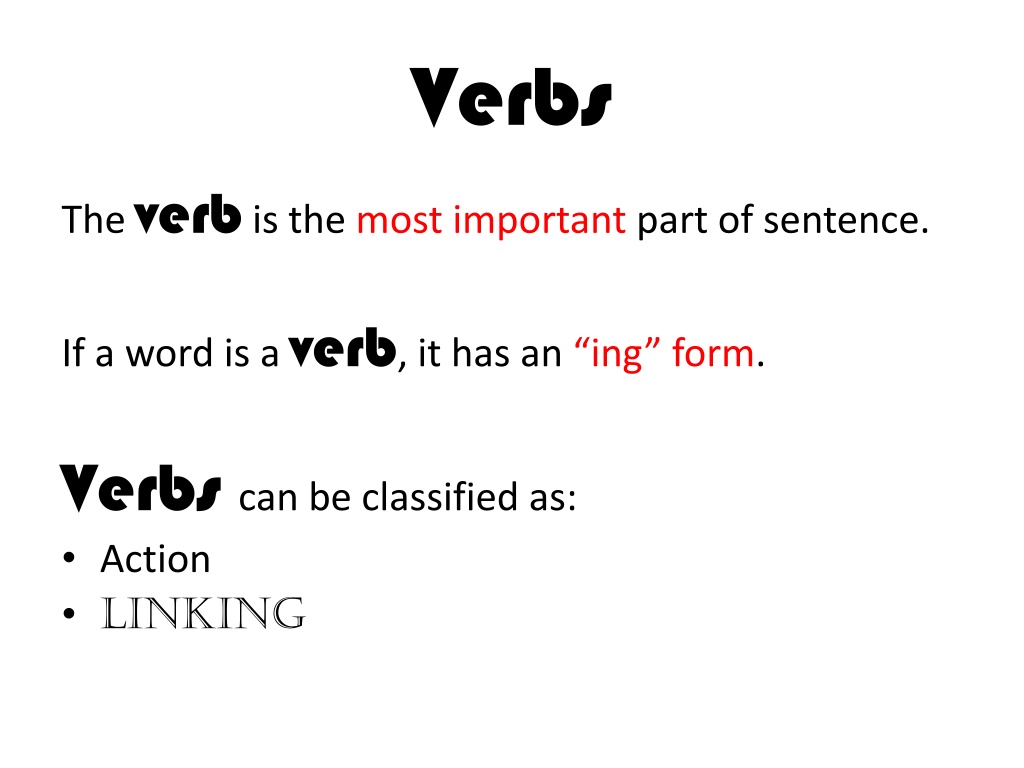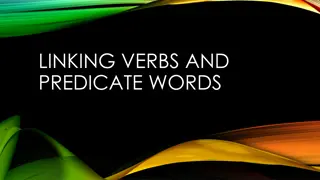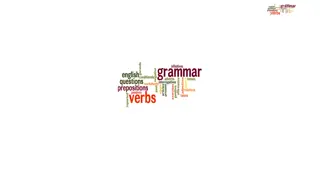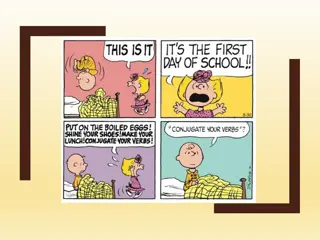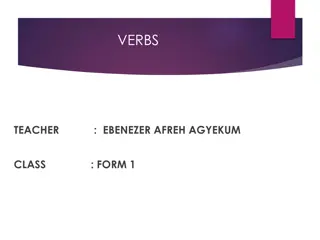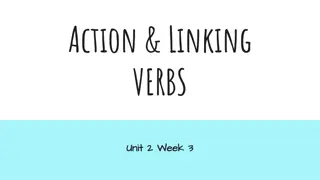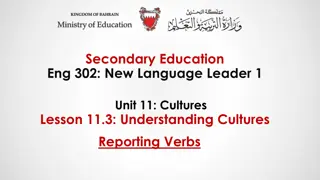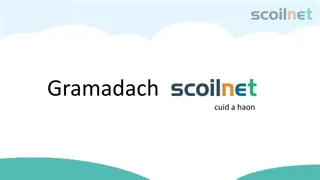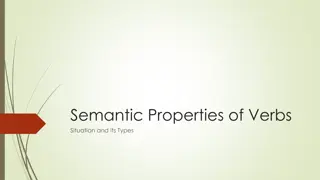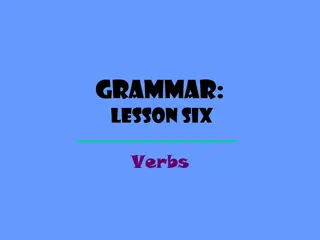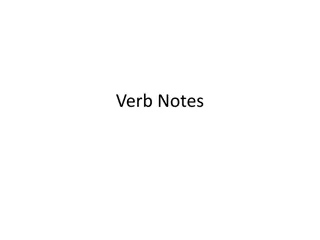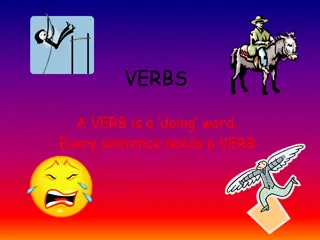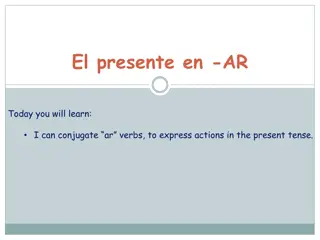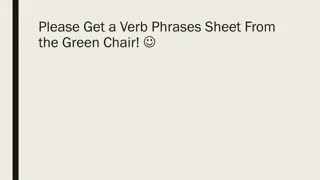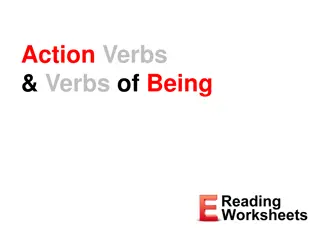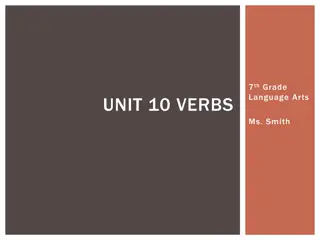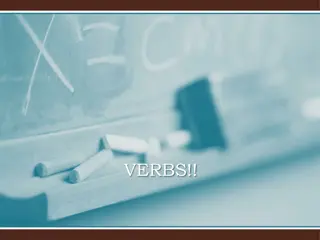Understanding Verbs: The Key Elements in Sentence Structure
Verbs are essential components of sentences, with both action and linking verbs. They can form verb phrases with helping verbs and may be interrupted by adverbs. A substitution test involving forms of "to be" can help differentiate linking and action verbs. Explore the nuances of verbs in sentence construction for effective communication.
Download Presentation

Please find below an Image/Link to download the presentation.
The content on the website is provided AS IS for your information and personal use only. It may not be sold, licensed, or shared on other websites without obtaining consent from the author. Download presentation by click this link. If you encounter any issues during the download, it is possible that the publisher has removed the file from their server.
E N D
Presentation Transcript
Verbs The verb is the most important part of sentence. If a word is a verb, it has an ing form. Verbs can be classified as: Action Linking
Verb Phrases Consists of the main verb and any helping verbs that go with it. The maximum number of words in a verb phrase is four. Example: will have been singing = verb phrase
Adverb interrupter Adverbs frequently interrupt verb phrases. Example: have certainly been given Certainly is not a verb; it is an adverb. It interrupts , or comes between, the helping verbs and main verb in the verb phrase.
Substitution Test If you can replace the verb with a form of the verb to be (is, am, are, was, were, be, been or being), the verb in the sentence is a linking verb. Example as linking verb: The velvet material on the table felt soft. Example as action verb: The sales clerk felt the soft material of the velvet dress. If you cannot replace it, the verb in the sentence is an action verb.
